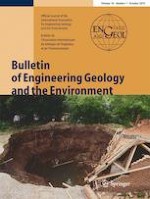10.01.2019 | Original Paper
Characteristics of weathered mudstone with X-ray computed tomography scanning and X-ray diffraction analysis
Erschienen in: Bulletin of Engineering Geology and the Environment | Ausgabe 7/2019
EinloggenAktivieren Sie unsere intelligente Suche, um passende Fachinhalte oder Patente zu finden.
Wählen Sie Textabschnitte aus um mit Künstlicher Intelligenz passenden Patente zu finden. powered by
Markieren Sie Textabschnitte, um KI-gestützt weitere passende Inhalte zu finden. powered by
